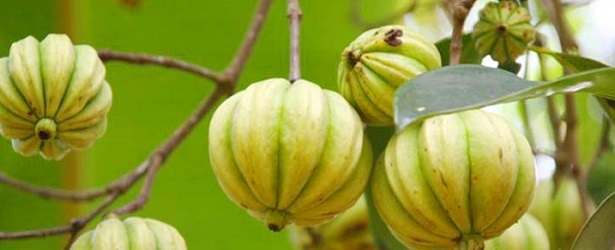
The Garcinia Cambogia Fruit
Dr Oz really got the world’s attention when he reviewed Garcinia Cambogia and its potential weight loss benefits on his show. Up until that point, this was simply a fruit that was only known about in the regions where it grew. It has now become an international superstar. Not bad for a plant that was relegated to supplementing curries and or two traditional uses.
Where Garcinia Cambogia Comes From
 The Garcinia genus is a fairly large one with around about 500 different species in all. The plant prefers a more tropical climate and is found in Australia, Asia, Africa and Polynesia. It is thought that Garcinia Cambogia originally came from Indonesia.
The Garcinia genus is a fairly large one with around about 500 different species in all. The plant prefers a more tropical climate and is found in Australia, Asia, Africa and Polynesia. It is thought that Garcinia Cambogia originally came from Indonesia.
It was not unknown to the western world – a treatise in the 1800’s deals with the preparation of the fruit – apparently the seeds and pulp are removed and the rest is broken up and left, under cover, for a couple days to allow it to soften. Once that is accomplished, it is smoked over a few days and then hung in a bag ready for use.
The fruit of the Garcinia Cambogia is also well known in Malaysia, Thailand and Myanmar – the dessicated rind being enjoyed as a pickle.
The Malabar Tamarind is the name the fruit goes by in India. It is also called Cambodge and Kudampuli.
When Is It Available In India?
It is most common in the south of the country – many of the villagers grow the trees in their gardens.
The trees fruit in the rainy season – June to August. They prefer altitudes of less than 6000 feet.
Finding Garcinia Cambogia In India
If you visit the south of the country, during fruiting season, you may be able to buy the fruit fresh. It is more common, however, to find the dessicated, smoked form for use in curries or to get it in supplement form at a health store. It is a traditional Ayurvedic remedy for a number of ailments ranging from neuralgic discomfit to sleeplessness.
How To Know If the Fruit Is Ripe
If the fruit is green, it has not ripened and should not be picked. The ripe fruit can take on many different hues ranging from yellow tones to bright red ones. The fruits are no longer good for consumption if they are looking dull or leathery.
What Garcinia Cambogia Tastes Like
It is somewhat of an acquired taste as it is acidic and a bit sour. This makes for a good digestive aid in terms of Ayurvedic medicine but is also makes the fruit largely unpalatable straight off the tree. Properly prepared, it makes a good, zesty, flavor enhancer.
Garcinia Cambogia’ s Nutritional Value
This is one area that has not been fully explored but if you consider its benefits there is a good chance that it has a good quantity of Vitamin C, fiber and water and is also low in terms of fat content.
Cambogia’s Health Benefits
Ayurveda lists this fruit as a useful treatment when it comes to arthritic, digestive and rheumatic disorders as well as in the treatment of diseases of the gums. It is considered a useful treatment in getting rid of parasites and is considered a purgative.
Hydroxycitric Acid (HCA)
HCA is what the western scientist are most interested in as it is this that accounts for its weight loss benefits in terms of increasing the metabolism and burning of fat and in suppressing the appetite. The HCA also has a unique benefit in that it switches off the main enzyme responsible for the conversion of carbohydrates into fats. As a result, they are used as fuel.
TOP 5
GARCINIA CAMBOGIASupplements |
|||||
| Garcinia Cambogia Premium | GHI Garcinia Cambogia Review | Miracle Garcinia Cambogia | Pure Nutrition Labs Garcinia Cambogia Complex | Pro-Nutra Garcinia Cambogia | |
|---|---|---|---|---|---|
| 1 | 2 | 3 | 4 | 5 | |
| Price (1 bottle) Price (6 bottles) Best Value |
$48.00 $138.00 |
$38.88 $209.95 |
$53.99 $291.54 |
$21.99 $118.75 |
$59.99 $323.95 |
| Overall Rating | 99.4% | 79.8% | 76.1% | 69.9% | 61.9% |
| Effectiveness |





|





|





|





|





|
| Speed of Results | Extremely Fast | Good | Good | Average | Slow |
| Quality of Ingredients | Premium | Good | Average | Average | Average |
| Customer Satisfaction Evaluation | 99.0% | 78.0% | 75.0% | 66.9% | 60.4% |
| Safety Evalutation | Safe for Use | Safe for Use | Safe for Use | Safe for Use | Safe for Use |
| Customer Service Rating |





|





|





|





|





|
| Reorder Rate | Highest | Good | Average | Average | Average |
| Return Policy | Risk Free | Risk Free | Unclear | Unclear | Unopened Only |
| Success Rate | 99.0% | 77.2% | 74.6% | 66.0% | 60.0% |

 Subscribe Now
Subscribe Now











